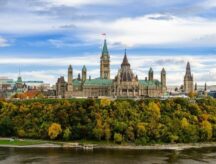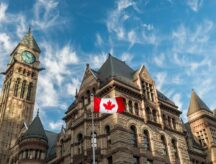Canadian University Participation Rates on the Rise
A new report released by the Association of Universities and Colleges of Canada projects that on a national scale, Canadian university enrolment over the next ten years will increase by up to an additional 150,000 students. Labour market demand, immigration, and international students are important contributing factors to the increased participation rates.
Canada's increasingly knowledge-based economy is fuelling national university enrolment growth by demanding more and more skilled knowledge workers. Since 1990, the number of Canadian jobs that require a university education has doubled, and remains the fastest growing segment of the labour market.
This new report indicates that a greater percentage of university-aged Canadians (18-21 years) will pursue higher education. To further stimulate enrolment rates, the Association of Universities and Colleges of Canada report calls on Canadian universities to attract more adult learners, distance learners, graduate students, visible minorities, international students, and student from less advantages economic backgrounds.
The international student body is an important driver of increased university enrolment rates at Canadian universities. Additionally, many foreign students are staying in Canada upon graduation and contributing to the Canadian labour force on Post-Graduation Work Permits. Provinces have implemented International Graduate streams in their Provincial Nomination Programs to encourage these students to stay and to become Canadian Permanent Residents.
Also fuelling increased post-secondary enrolment is immigration to Canada. Jeffrey Reitz, Professor of Ethnic, Immigration and Pluralism Studies at the University of Toronto states that, "many immigrants come to Canada particularly to provide a good education for their children." He adds that children of immigrants are doing well in Canadian schools. New Canadian immigrants and their children are important drivers of increased university participation rates. They will ensure that Canadian universities can continue to produce world-class graduates and a strong and vibrant workforce to fuel the Canadian economy.
- Do you need Canadian immigration assistance? Contact the Contact Cohen Immigration Law firm by completing our form
- Send us your feedback or your non-legal assistance questions by emailing us at media@canadavisa.com



